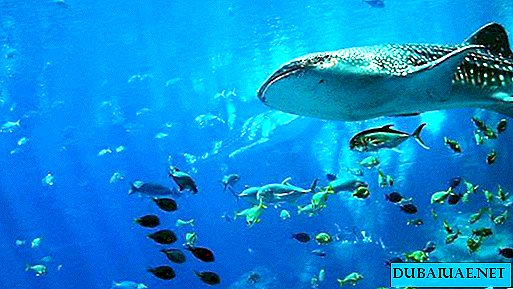 Despite the vicissitudes of history, this small state, with an area of less than two hectares, has managed to maintain individuality and originality due to its great potential. Prince Rainier III gave the principality an undeniable economic scale, and His Serene Highness Albert II introduced the country to the 21st century, personally leading the United Nations and paying particular attention to the problems of the planet's ecology and the struggle for humanity.
Despite the vicissitudes of history, this small state, with an area of less than two hectares, has managed to maintain individuality and originality due to its great potential. Prince Rainier III gave the principality an undeniable economic scale, and His Serene Highness Albert II introduced the country to the 21st century, personally leading the United Nations and paying particular attention to the problems of the planet's ecology and the struggle for humanity.
A bit of history
It is said that the name "Monaco" comes from Portus Hercules Monoecus - the ancient port of Hercules, which is mentioned in Mediterranean legends. But in fact, Monaco should be called the port of silence, the land of the sun, the garden of happiness. Like a snow-white gull, the principality soars above the sea, playing with the warm breeze that lifted it on outstretched wings. Monaco laughs to the whisper of the surf and foaming champagne, his joy is contagious and charming, like a woman strewn with pink and blue flowers, inviting into unspoiled fields with the bitter aroma of thyme, lemon and salty sea. The Principality of Monaco consists of four areas: the old city of Monaco, its center is decorated with a noble view of the Grimaldi Palace; located around the port of La Condamine Monte Carlo, on the cliffs of which stands Carino, as well as hotels and the celebration always continues; and Fontvieille, about 220 thousand square meters. meters of which were recaptured from the sea in the seventies.
Under an external raid of joy and optimism lies a deep thousand-year history. This is one of Monaco's most carefully hidden secrets - turning history into life, roots into fruits. In the vicinity of the principality are countless historical values, in its caves the skeletons of the first inhabitants of the Mediterranean have been preserved, on its hills - the ruins of ancient cyclonic walls. Sometimes waves return to people a piece of history stored in the depths of the sea: a Carthaginian coin, the remains of Phoenician ceramics, the Greek sword ...
All the peoples who lived on the shores of the Mediterranean Sea were primordial navigators, they plowed these waters and stopped on this land. In the XII century, Frederick Barbarossa, Emperor of Germany, granted Genoa the right to own the entire Ligurian coast - from Porto Venere to Monaco. These were the years of the struggle of the Guelphs (adherents of the pope) and the Gibbelins (defenders of the emperor). It was at this time that a noble Ligurian family, from the ancient family of Grimaldi, appeared in the history of Genoa.
The Grimaldi were Guelphs and, being faithful to their party, they were forced to bear the brunt of exile. Rainier Grimaldi died, defending a doomed business, became the captain of a merciless fleet of ships hunting for any ships from Genoa that were approaching the Ligurian shores. Another family member, François Grimaldi, tried to take possession of the rock of Monaco. This event is a romantic page in the history of the principality. Francois Grimaldi dressed as a monk to break into the fortress. And thus, by cunning, comparable only to the cunning of Odysseus, he managed to catch Genoese guards by surprise, for which he received the nickname that his family - the Cunning, immortalized in history. Starting from this date, the Grimaldi family gradually strengthened its ownership of the rock. Under the rule of the French, in 1509, Grimaldi managed to enter the sphere of political influence of Spain and the treaty of Burgos and Tordesillas (1524), recognizing the autonomy of this state, which found its patron in the faces of the powerful monarch of the Christian era - Charles V.
The tragic moments of the history of Monaco are associated with the French Revolution, when Honore III, Prince of Monaco, was overthrown and imprisoned in Paris. In the hands of its new owners, the principality was on the verge of destruction. And only with the advent of Charles III Grimaldi to power did reforms begin in the country. Under his bold and wise leadership, Monaco has become a modern country, open to all movements, with the most advanced ideas for that time. His son Albert I - an outstanding scientist, passionately in love with the sea, made his special contribution to the reconstruction of the country. Relations with France were strengthened on a friendly basis, and Monaco, thanks to the personal qualities of the monarch, was already considered as a significant country within the framework of Mediterranean culture and life. To his tourist glory of the ruler, the prestige of the country, which has become an international center for holding numerous cultural events, has now been added.
The son of Albert I, Prince Louis II, survived the difficult times of the Second World War. Since the accession to the throne of Prince Rainier III in 1949, Monaco has experienced a period of economic take-off. One of the most important events was the construction of a tunnel for the railway line, a floating dock, which serves as a pier for large cruise ships. All residents of Monaco bitterly recall the sad April day of 2005, when His Holiness Highness Rainier III - “Prince Creator” left this world forever, remaining in the hearts of his loving subjects. Crown Prince Albert was crowned November 10, 2005 and became the new sovereign of Monaco.
 Meet Monaco
Meet Monaco
Our acquaintance with the Principality of Monaco began with a visit to the palace. Monaco Palace is a powerful square fortress built in the XVI-XVII centuries, while preserving the medieval towers built by the Genoese in 1215. In this palace, the humanist prince Honore II created his own small Versailles, decorated with silk, velvet, silver and ebony. The harmony of lines and the beauty of numerous tapestries made by famous artists and decorating the salons and rooms of the palace are a legacy of great artistic value.
An interesting museum of Napoleon, which stores the history of the family and dynasties of Grimaldi. One of the most interesting rooms on the historical halo is the bedchamber of York. It was in this room at the end of the 18th century that the Duke of York spent the last minutes of his life. The bed, the balustrade, the frame of the alcove are all decorated with gilded sculptures of the 17th century. Venetian objects, Japanese furniture, as well as a ceiling painted with frescoes, in the center of which is represented "Glory with the arms of Grimaldi," give this room an extraordinary value.
Unity with nature
The main attraction of the Principality of Monaco is its geographical location. In fact, Monaco is a palace on the rocks. The best architects were able to appreciate this natural beauty and inscribed their creations in the aesthetics of rocks and the sea. The cathedral is an almost natural addition to the breakwater of Monaco. It rises on one of the highest points of the city and is similar to a ship leaving for the sea. Even more ancient are the temples of St. Charles and the Holy Martyr (Sainte Devote). This small church was erected in the Gomat Valley, where the relics of the saint are stored. According to legend, on January 27, 304 a ship from Corsica, on board which was the lifeless body of a young Christian martyr, ran aground in this place. She was found by fishermen and recognized as the patroness of Monaco. Every year, in the presence of a family of princes, a fishing boat is burned, from the side of which a white dove takes off, symbolizing the spirit of the Holy Martyr.
 In its climate and geographical position, Monaco occupies an exceptional place. This is a country with magnificent exotic vegetation. Almost all types of plants - from African flora to Arizona cacti - adapt to the mild climate of the principality. The inhabitants of Monaco, lovers of everything exquisite, were able to combine the needs of urban growth with the ecological wealth of their land. It is thanks to these efforts that spontaneous and fresh sprouts of life, full of colors and joys, appear on this fertile land, which can be proud that it occupies the first place in progress and civilization. This is one of Monaco’s most beautiful paradoxes: the ability to protect one’s history without aging is combined with concern for the conservation of nature, while not forgetting the main goal - to be a modern and orderly country, a model of civilization. Thus, a priceless diamond is polished and a delicate rose is grown, immaculate and spontaneous works of a centuries-old way of life.
In its climate and geographical position, Monaco occupies an exceptional place. This is a country with magnificent exotic vegetation. Almost all types of plants - from African flora to Arizona cacti - adapt to the mild climate of the principality. The inhabitants of Monaco, lovers of everything exquisite, were able to combine the needs of urban growth with the ecological wealth of their land. It is thanks to these efforts that spontaneous and fresh sprouts of life, full of colors and joys, appear on this fertile land, which can be proud that it occupies the first place in progress and civilization. This is one of Monaco’s most beautiful paradoxes: the ability to protect one’s history without aging is combined with concern for the conservation of nature, while not forgetting the main goal - to be a modern and orderly country, a model of civilization. Thus, a priceless diamond is polished and a delicate rose is grown, immaculate and spontaneous works of a centuries-old way of life.
We took a walk visiting the Fontvieille Gardens, the Pink Alley of Princess Grace, the Saint Martin Gardens and the Japanese Garden. Nevertheless, the Exotic Garden is of particular beauty among all these spaces. This paradise, located on the latitude of New York and Vladivostok, was opened to the public in 1933, during the reign of the great natural scientist Prince Louis II. Thanks to the extraordinary microclimate, plants in Monaco acquire the dimensions that they reach in their homeland. At the bottom of the Exotic Garden is the entrance to the Grotto of the Observatory. Numerous halls and walkways located at a depth of 28 to 104 meters allow us to admire the stalactites and stalagmites.
Cultural life
Few countries in the world can be proud, like Monaco, of such an eventful cultural life: museums, libraries, theaters, international congresses, internationally recognized educational and research institutions ...
The intellectual image of the principality is not inferior to its tourist glory. In this country, museums are not just a collection of works of art, they are real scientific centers engaged in research and educational activities. The Oceanographic Museum fully meets these characteristics - it reflects the essence and soul of Monaco. The museum's buildings are built on cliffs breaking off directly into the sea - this is the creation of the architect Delefortry was discovered in 1910. In his speech on the opening day of the museum, Prince Albert I said: "I am opening an oceanographic museum to transmit it to all the servants of scientific truth. Here they will find the confidence, freedom and rivalry that are necessary for intelligence." The museum houses an aquarium, where one of the largest and richest collections in the world is represented. Here you can see incredible species of fish and marine animals collected from around the globe. Having created the Oceanographic Museum "The Wise Prince" did something more than a dedication to oceanography, to which he devoted a significant part of his life. The founder of the science of oceanography, Prince Albert I, also became a harbinger of such a scientific field as oceanology. The evolution of mankind determines the direction of this science along the path of reassessing the role of the ocean in the name of improving life on earth.
"Temple of the Sea" - the museum tends to rise as a continuation of the rock from which it grows, symbolizing the conditionality of life on earth from the ocean, dazzling with its beauty and wealth.
The museums of anthropology, philately and numismatics, the maritime museum, as well as the collection of old cars of His Grace the Prince of Monaco are unique in their immeasurable value.
Monaco, of course, is a millennium-old tradition, the exquisite modernity of Monte Carlo, inextricably linked with the Belle Epoque period, a vibrant cultural and creative life. But above all, Monaco is the sea. The sea, blue and transparent, is visible from any corner. At the initiative of the Government of Monaco to protect nature, it became possible to create a water space to preserve the local fauna and flora. In the bay of Lavrotto - in the area enclosed by buoys, forbidden for ships and fishermen, this "shelter of silence" was created. The sea is the heart of the principality, beating in time and revitalizing Monaco.
Not sleeping in Monte Carlo
 An integral part of the territory of Monaco is Monte Carlo. Life in Monte Carlo is reduced mainly to three cardinal points: a casino, Hotel de Paris and Caféde Paris. Modern Monte Carlo was created by Prince Florestan. He was a man exclusively gifted in the field of art, who knew the theater world very well. In Paris, he met his future wife, Princess Carolina. They had the idea of turning the principality into a kind of theatrical stage, where good taste and the ability to live beautifully would find expression. So the tourist region of Monte Carlo was born - the star of the nightlife of the principality, the heart of high society, for which gaming halls, cafes, and huge luxury hotels were created. Francois Blank became the head of the gambling business. Under his leadership, the casino has become one of the most famous gaming halls in the world. The regulars of the casino said with a sense of humor: "It doesn’t matter what color to bet on - red or black, the form will still win - white!"
An integral part of the territory of Monaco is Monte Carlo. Life in Monte Carlo is reduced mainly to three cardinal points: a casino, Hotel de Paris and Caféde Paris. Modern Monte Carlo was created by Prince Florestan. He was a man exclusively gifted in the field of art, who knew the theater world very well. In Paris, he met his future wife, Princess Carolina. They had the idea of turning the principality into a kind of theatrical stage, where good taste and the ability to live beautifully would find expression. So the tourist region of Monte Carlo was born - the star of the nightlife of the principality, the heart of high society, for which gaming halls, cafes, and huge luxury hotels were created. Francois Blank became the head of the gambling business. Under his leadership, the casino has become one of the most famous gaming halls in the world. The regulars of the casino said with a sense of humor: "It doesn’t matter what color to bet on - red or black, the form will still win - white!"
The Monte Carlo district, since the 19th century, has turned into a prestigious place visited by a chosen society, into the Baroque quirk of the rich of this world, into a city of dreams and jewelry, beauty and flowers. Its development takes place in parallel with the conquest of the belle époque, when Europe won the aesthetics of luxurious forms, most pronounced in the Hotel de Paris and the Hermitage. Monte Carlo is a triumph of sensuality, twists, aesthetics. In the salons of the casino we find incomparable instances of the decorative design "belle epoque", hot, baroque, with a game of imagination, sometimes with obvious features of decadence. Smoking nymphs, melancholy girls dreaming of a rose with ragged petals, peasant women collecting oranges with grace and grace of dressed marquises ... - all these bizarre shapes are imprinted in architecture that fills a space like baroque smoke rings.
The meeting place for all Monaco guests is the Cafe de Paris. Among his regulars are many famous names. Edward III, while still a Prince of Wales, came here every morning to taste the Suzette pancakes, specially created for this sophisticated gourmet. It is impossible not to mention the names of Enrique Caruso, Faruh - the king of Egypt, Sir Winston Churchill, Aga Khan and many others who, being famous, filled these prestigious places with life.
The Hotel de Paris, opened in 1864, has been and remains one of the most luxurious and sophisticated in Europe. Listing the names of the guests of this hotel, one could write world history: the Grand Dukes of Russia, the Emperor of Austria Leopold II, writers, artists, musicians, cinema, theater, ballet figures, entrepreneurs, large industrialists and others. The list is endless. All famous people, having been here once, are happy to return again.
To create a new living space of the principality took tens of years of huge work. Fontvieille implements the original plan of Prince Rainier III, with his ingenious gift for foreseeing future development. A panoramic helicopter tour gives you the opportunity to enjoy the wealth of new buildings, the poetry of gardens, the tranquility of the squares and the grandeur of the monuments of these places.
Monaco is a country that preserves its deep cultural traditions. There is a theater in Monte Carlo, this is the Garnier Hall, where an exquisite and educated audience comes, familiar with both classical works and the latest innovations of the musical avant-garde. Sergei Diaghilev founded his famous Russian ballet in Monaco, where Nizhinsky, a real ballet star, shone with his talent. The best representatives of all time performed in the Garnier Hall, starting with Sergey Lifar and up to Alicia Alonso. Monaco lives in an enchanted atmosphere of dance harmony. There are not so many places in the world that have such beauty, surrounded by nature, which serves as a natural decoration for the performances of this exquisite form of art.
The cultural season in Monaco offers everything: film festivals, concerts, tickets, painting exhibitions, scientific congresses and so on. However, none of these events is supposed to be closed, designed for connoisseurs, on the contrary - it is a real rest for the soul, in a joyful and free environment. We must not forget that Monaco is a country that knows how to turn everything into a holiday.
Oh sport, you are the world!
Undoubtedly, in Monaco, sport is a priority in the list of entertainment and outdoor activities. Prince Albert II himself was repeatedly elected to participate in the Olympic Games in a discipline requiring self-mastery, the ability of cold calculation - bobsled. Tennis is also very popular in the principality, where there are more than 20 courts of various levels, surrounded by paradise nature. Every spring, the best rackets of the whole world compete here in the spring.
However, without fear of exaggeration, we can say that motor sport in this country is a sacred action. Twice a year, the largest international competitions are held here. The Monaco Grand Prix is a national phenomenon. Created at the initiative of Anthony Noges, the Formula 1 Grand Prix continues to be the most exciting event in the world. Since 1929, the quiet streets of Monaco are transformed every year, during the Ascension Day, into a unique circuit, attracting more than 100,000 spectators from around the world.
Alloy of the sun, sea and joy
 Legends have been passed down from generation to generation that many thousands of years ago people lived in the caves of Grimaldi. There is no doubt that even then people realized how advantageous and convenient this place was, created by nature itself. Centuries have passed, but the sun of the Mediterranean Sea does not cease to caress the Grimaldi rock.
Legends have been passed down from generation to generation that many thousands of years ago people lived in the caves of Grimaldi. There is no doubt that even then people realized how advantageous and convenient this place was, created by nature itself. Centuries have passed, but the sun of the Mediterranean Sea does not cease to caress the Grimaldi rock.
Neither the trade of the Phoenicians and Greeks, and subsequently the Roman conquerors, nor the Spanish rule and the French Revolution interfered with the life of the people of Monaco and the rule of its princes. Today, just like yesterday, the Principality of Monaco continues to monitor the preservation of its own sovereignty as an element of Mediterranean history and values the rights of its princes. The crossroads of the world, the Principality of Monaco, is a land decorated with flowers from around the world. Just a tiny piece of land, about which Marcel Pagnol spoke, defining its essence, expressed in respect for the traditions that any dynamic evolutionary movement must rely on: "Art can still live here, in the shade of an olive tree, next to the Latin sea, there where the dominion of one ensures the freedom of everything. "
A joyful land, an alloy of the sun and the sea. Everything here is imbued with the harmony inherent in a work of art, and the excitement associated with a working business cannot upset this classical balance. In Monaco there is always time and place for everything: work and leisure, silence and conversation, study and sport.
The princes are at the helm of the ship of Monaco and heading along the arrows of the natural compass created and preserved by their ancestors, adding to Monaco's fame and success in the historical arena.










